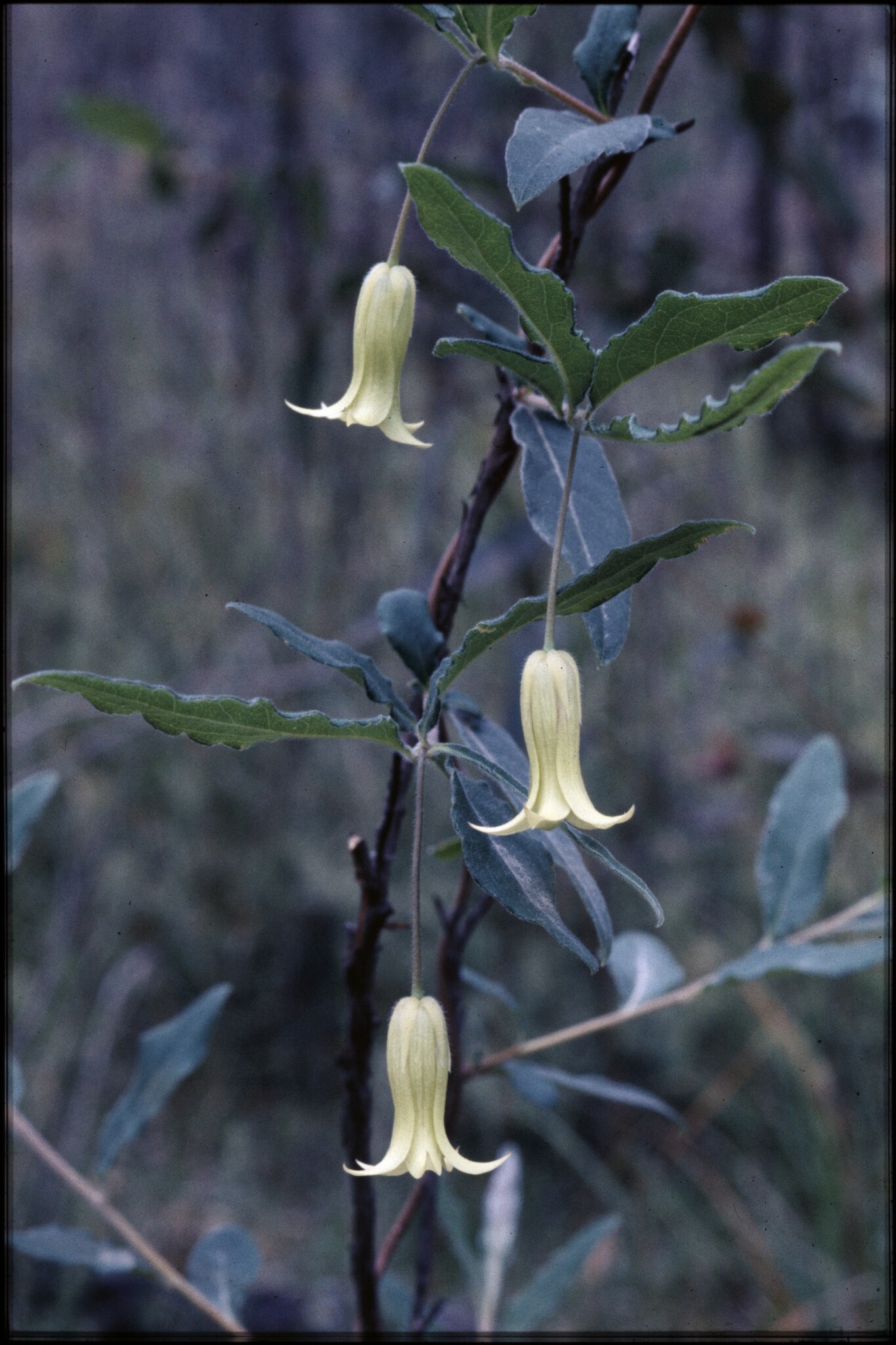
Commemorating Jacques-Julien Houtou de Labillardière 1755–1834, French botanist who accompanied the d’Entrecasteaux expedition and described many Australian plants.
Shrubs, climbing or trailing in most early stages. Leaves alternate, mainly elliptic, margins entire or slightly wavy. Flowers solitary or few, or in terminal clusters; cream-yellow, becoming spotted dark blue or pink with age, or pink or blue and darkening with age. Sepals free. Petals mainly joined in a floral tube, the apices free and often reflexed salver-form. Stamens with white anthers much shorter than filaments; pollen yellow or pink-mauve. Ovary 2-chambered. Fruit indehiscent; either: berry-like, fleshy, green-purple, cylindrical, with numerous seeds inserted in a 2 rows in each chamber; or glossy deep purple, with a flexible, thin fruit wall, the numerous seeds free, not inserted in a fleshy mesocarp.
Climbing plants with attractive flowers, but bird-dispersed and potentially weedy.
About 18 species (excluding Marianthus and Rhytidosporum), splitting fairly neatly into 2 groups: the mainly yellow-flowered (the exception is B. volubila) apple-berries and snot berries group (9 species), found in E and S Australia; and the remaining species which are mainly blue or pink-flowered and found in S WA.
Cuttings, or allow seed to mature in a paper bag for at least 6 months before sowing.
Attractive tubular, nodding flowers followed by berry-like, fleshy, edible (bitter) fruits with numerous seeds in 2 rows in each chamber.
Source: (2002). Pittosporaceae. In: . Horticultural Flora of South-eastern Australia. Volume 3. Flowering plants. Dicotyledons. Part 2. The identification of garden and cultivated plants. University of New South Wales Press.
